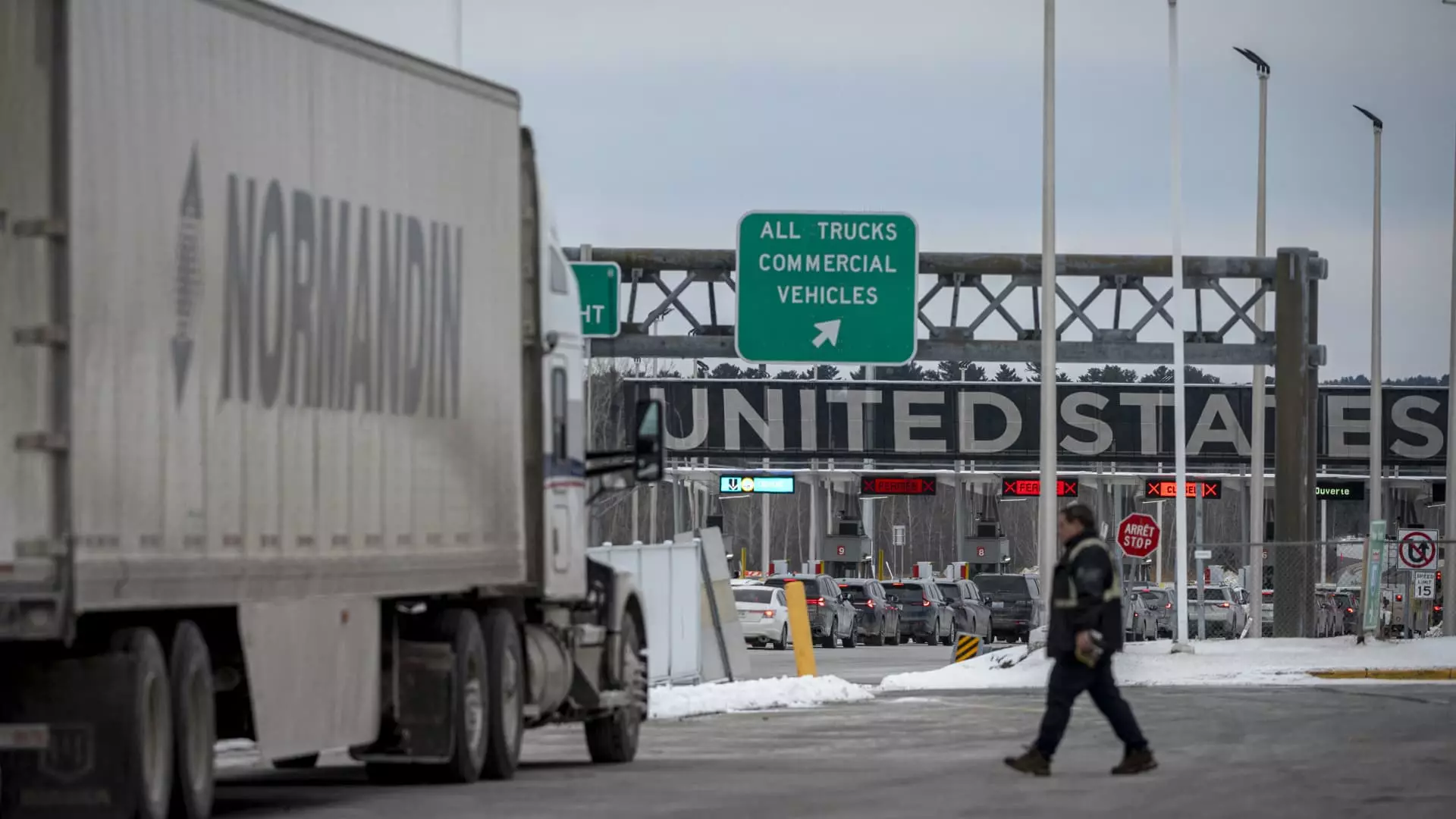As the economic climate shifts, the impending tariffs set to take effect on imports from major trading partners present a complex challenge for U.S. consumers. With President Donald Trump’s recent announcement of a 25% tariff on goods from Canada and Mexico and a 10% levy on imports from China, economists caution that these measures could reinforce high borrowing costs. Recent forecasts suggest these tariffs, if enforced as planned, may escalate consumer prices, ultimately affecting the broader economy.
The imposition of tariffs typically serves as a protective measure for domestic producers; however, this protectionist approach may inadvertently burden consumers through higher expenses. Economists have predicted that the tariff system will exert upward pressure on inflation. With inflation remaining above target levels, the Federal Reserve might be compelled to rethink its strategy regarding interest rate cuts, a move that could further complicate consumer borrowing dynamics.
As per projections by economic experts, the tariffs could increase inflation rates by approximately 0.5% to 1% through 2026. This increase is particularly significant given the Federal Reserve’s ongoing battle to stabilize inflation while ensuring labor market health. The tariffs have the potential to influence the Personal Consumption Expenditures Price Index— a key inflation measure utilized by the Fed.
If inflation creeps higher as a result of these tariffs, the Fed may find itself in a position where it cannot cut interest rates further. According to Paul Ashworth, chief North America economist at Capital Economics, the likelihood of the Fed cutting rates over the next 12 to 18 months diminishes drastically in this inflationary scenario. Thus, a higher inflation rate could correlate with sustained or increased interest rates, impeding consumer access to affordable credit.
Despite the proposed tariffs, the economic landscape remains fluid, marked by uncertainty and rapidly changing conditions. For instance, the announcement of a temporary pause in tariffs on Mexico following negotiations highlights the unpredictability surrounding trade relationships. In an environment defined by such volatility, observers like Susan Collins, president of the Federal Reserve Bank of Boston, caution that policymakers must navigate carefully to avoid exacerbating economic challenges.
Additionally, tariffs on imports from Canada and China are likely to take effect as planned, contributing to the rising speculation about their long-term economic ramifications. Current estimates indicate these measures could elevate inflation to around 2.8% by late 2025—a figure that is notably above the Fed’s comfort zone. Such inflation surpasses the anticipated baseline, suggesting that these tariffs could prevent any chance of interest rate reductions in the near future.
The broader implications of these tariffs do not end with immediate inflationary spikes; they also tie closely to the overall health of the U.S. economy. J.P. Morgan projects a potential decrease in U.S. gross domestic product (GDP) by 0.5% to 1%. This downturn may compound existing concerns about economic growth, as reduced consumer spending resulting from inflated prices could hinder domestic production and jobs.
Moreover, experts have indicated that the confluence of higher tariffs, diminishing GDP growth, and persistent inflation might paradoxically result in an environment conducive to interest rate cuts. While on the surface this may appear counterintuitive, the adverse economic effects of tariffs could prompt proactive measures from the Fed, resulting in a reduction in rates to stimulate growth.
The introduction of new tariffs has far-reaching implications that go beyond immediate inflationary costs. As consumers brace for higher prices, the interconnected nature of tariffs, borrowing costs, and overall economic stability highlights a precarious position for both the economy and everyday Americans. Policymakers must tread cautiously as they navigate this complex landscape, balancing the protective nature of tariffs with the potential for widespread economic consequences. The coming months will be crucial in determining whether these protective measures yield the desired outcomes or create substantial hurdles for the U.S. economy.

